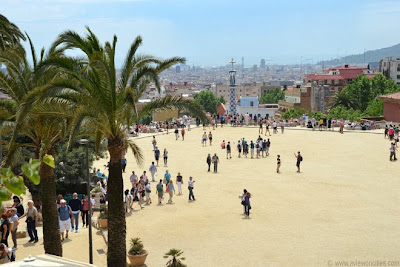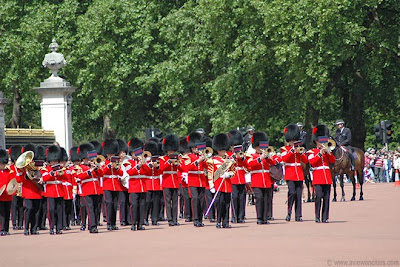For the many immigrants who flocked from Europe to
New York, the Statue of Liberty was the first image they saw of the USA.
The statue was a gift from the French government for the 100th
anniversary of America's Independence.
Design
Statue of Liberty Close-up
The statue was designed by a young French
sculptor, Frédéric-Auguste Bartholdi, who was striving to build a statue
like the great Colossus that once stood at the Greek island Rhodes.
The statue's face was modeled after his mother's and the story goes that the body was modeled after a prostitute.
The crown of Lady Liberty, as the statue is often affectionately called, has seven spikes, symbolizing the Seven Seas across which liberty should be spread. In her left hand she holds a tablet with the Declaration of Independence and in her right hand a torch, symbolizing Enlightenment.
The statue's face was modeled after his mother's and the story goes that the body was modeled after a prostitute.
The crown of Lady Liberty, as the statue is often affectionately called, has seven spikes, symbolizing the Seven Seas across which liberty should be spread. In her left hand she holds a tablet with the Declaration of Independence and in her right hand a torch, symbolizing Enlightenment.
Construction
The statue's steel framework was made by the French engineer Gustave Eiffel, better known as the man behind the Eiffel Tower in Paris.
Thanks to an ingenious construction consisting of copper plates
attached to the metal framework, the statue is flexible enough to
withstand heavy storms. Large iron bars attach the framework to a
central pylon.
The Statue of Liberty was constructed in Paris, France. It took nine years before it was completed in 1884 after which it was sent to the USA in 214 crates. Even before the arrival of the statue, Bartholdi himself had traveled to the United States to discuss the location of the statue with president Ulysses S. Grant. Eventually it was decided tot erect the statue at a small island in the harbor of New York City. Today the island is known as Liberty Island.
The Statue of Liberty was constructed in Paris, France. It took nine years before it was completed in 1884 after which it was sent to the USA in 214 crates. Even before the arrival of the statue, Bartholdi himself had traveled to the United States to discuss the location of the statue with president Ulysses S. Grant. Eventually it was decided tot erect the statue at a small island in the harbor of New York City. Today the island is known as Liberty Island.
Liberty Island
The statue's torch was displayed in Madison Square park for six years - from 1876 until 1882 - in an attempt to spark interest and attract funds. But it was only after publisher Joseph Pulitzer published the names of those who donated money for the project that the funds started flowing in. Eventually, the statue was erected 10 years late, in 1886, when it was officially inaugurated by president Grover Cleveland.





















